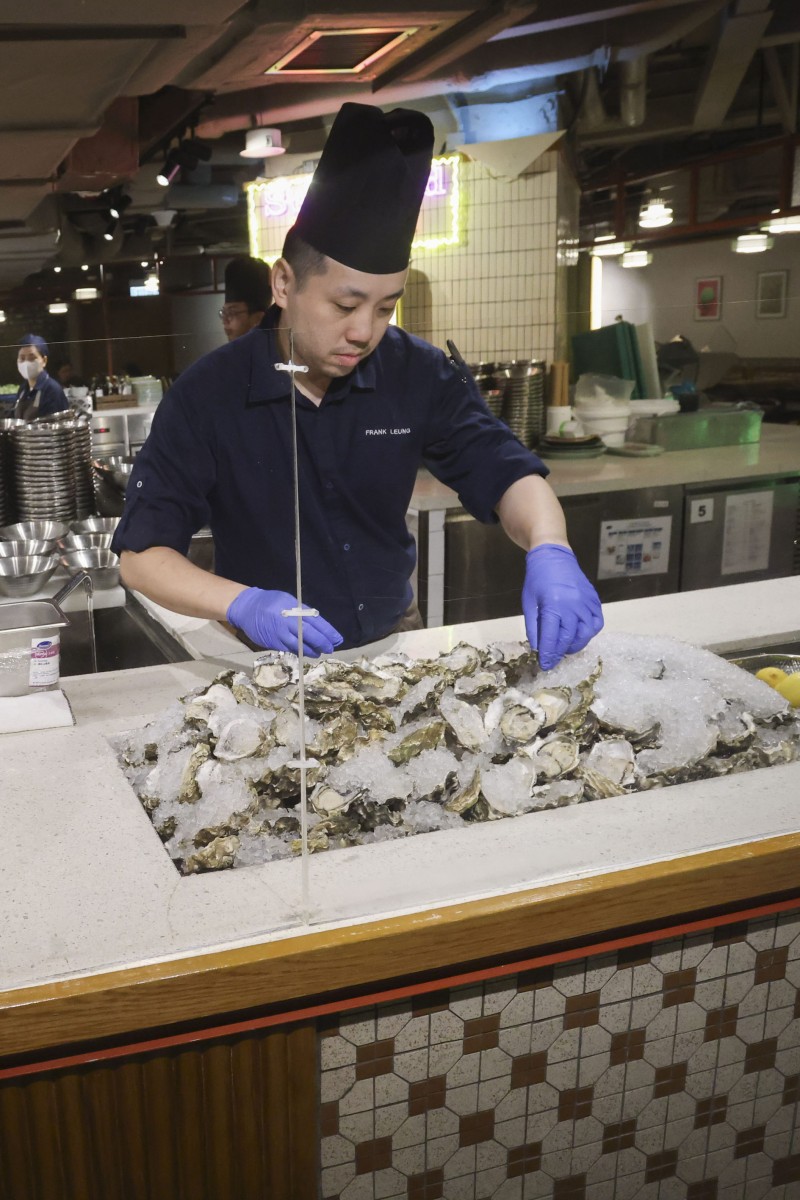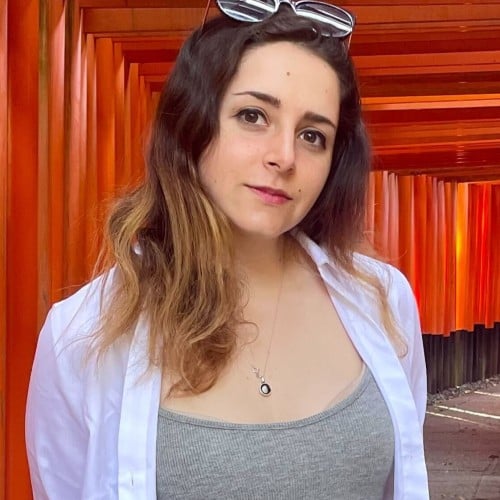
Building sustainability with oysters: how hotels’ discarded shells are turned into cement
- Green Island Cement has partnered with two Hong Kong hotels for the pilot upcycling project, aiming to reduce waste sent to landfills
- Every week, Talking Points gives you a worksheet to practise your reading comprehension with exercises about the story we’ve written
 After diners at Eaton HK finish their oysters, the shells are cleaned and sent to be turned into cement. Photo: Jonathan Wong
After diners at Eaton HK finish their oysters, the shells are cleaned and sent to be turned into cement. Photo: Jonathan WongOyster shells are bulky and plain, but the treasures they hold go beyond their tasty meat and beautiful pearls. One company in Hong Kong is turning them into materials for constructing buildings.
Green Island Cement said in a press conference in August that oyster shells are perfect for making cement because they are 91 per cent limestone – a key ingredient that requires a carbon-intensive process to mine. The company showcased their upcycling project that turns restaurants’ discarded oyster shells into building materials.
They aim to reduce the waste heading to landfills, while also alleviating the huge demand for cement.
Finding treasure in plastic bottles and broken rice cookers
Sustainability in everyday life
The project’s hotel partners, Eaton HK and The Langham, have saved eight tonnes of oyster shells for upcycling since the start of the pilot in March 2023.
Harvey Thompson, the general manager of Eaton HK, said that all of his employees supported the idea, even if it meant a bit of extra work.
Thompson felt the oyster programme was a chance to raise awareness about sustainability: “If our own teams understand it, they go out and send that message home as well.”
Besides educating employees, Thompson also ensures that restaurant customers and hotel guests learn about their sustainability efforts.
“We wanted ... to make sure that all of our guests saw the oyster shells. They were participating in something maybe they didn’t realise at the time,” he said.
While there is no plan yet for individuals to donate oyster shells to this programme, Thompson noted that learning about these efforts could be a catalyst for incorporating more sustainability practices in everyday life.
“Suddenly, you have a large group of people understanding what recycling means from something as simple as an oyster,” he explained. “It’s a good first lesson to say, ‘So what else should we be doing?’ ... It might get momentum.”
Thompson pointed out the hotel’s other eco-friendly initiatives: selling or giving away leftover food from the buffet, sourcing food in a sustainable way and using a machine to turn food waste into fertiliser.
He added that it was important to teach customers about how to avoid creating so much waste in the first place: “Just consume what you need and produce what you need.”
According to Green Island Cement’s division manager of operations and environmental business, Raymond Cheung Wai-man, other hotels were more sceptical about joining this initiative because of the labour needed for cleaning each shell and storing them for pickup.
“We also tried to contact other hotels during the past year but [did not get] many positive responses,” Cheung said.
But Thompson is confident that other hotels have the means to join this scheme and noted that the key to scaling up the operation would be to work together.
Hong Kong ethnic minority youth design and model upcycled clothes
The price of seafood consumption
People in Hong Kong consume three times more seafood than the global average. In 2023, the city imported more than 3,300 tonnes of oysters.
However, Hong Kong’s current food-waste recycling facilities cannot process oyster shells, meaning they will put stress on landfills when they are discarded. The organic waste category was the largest contributor to the city’s municipal solid waste, which accounted for 7 per cent of Hong Kong’s greenhouse gas emissions in 2020.
The idea of using oyster shells to make cement was first discussed by Green Island Cement around 20 years ago, but it was dismissed because of the arduous labour of cleaning each shell to avoid contaminants.
But Great Eagle Holdings – the parent company of Eaton HK and The Langham – revisited the idea after realising that they could collect oyster shells from hotel restaurants because the shells would already be cleaned by chefs. They then approached Green Island Cement, and the partnership was born.
After the shells are cleaned, they are crushed and mixed with the other ingredients needed to manufacture cement.
“The partnership we have already can be the vision for other future partners because ... we are promoting a collaborative effort in recycling,” Cheung said.
Both Thompson and Cheung believe the key to making this programme a success for years to come is to normalise oyster upcycling and involve the next generation.
“Young people have got creative minds, and what was not possible 10 years ago is possible next year or the year after,” Thompson said. “I think that’s where they have huge opportunity by just opening up their creativity and thinking about things differently in the future.”
Just as the oyster programme had to overcome setbacks, Cheung encouraged youngsters to push beyond adversity when looking to solve a problem in society.
“It doesn’t stop when you face a challenge,” he said. “Those are the little steps that we need to overcome to make the whole thing work. Just don’t stop when you face your first barrier.”
To test your understanding of this story, download our printable worksheet or answer the questions in the quiz below.
